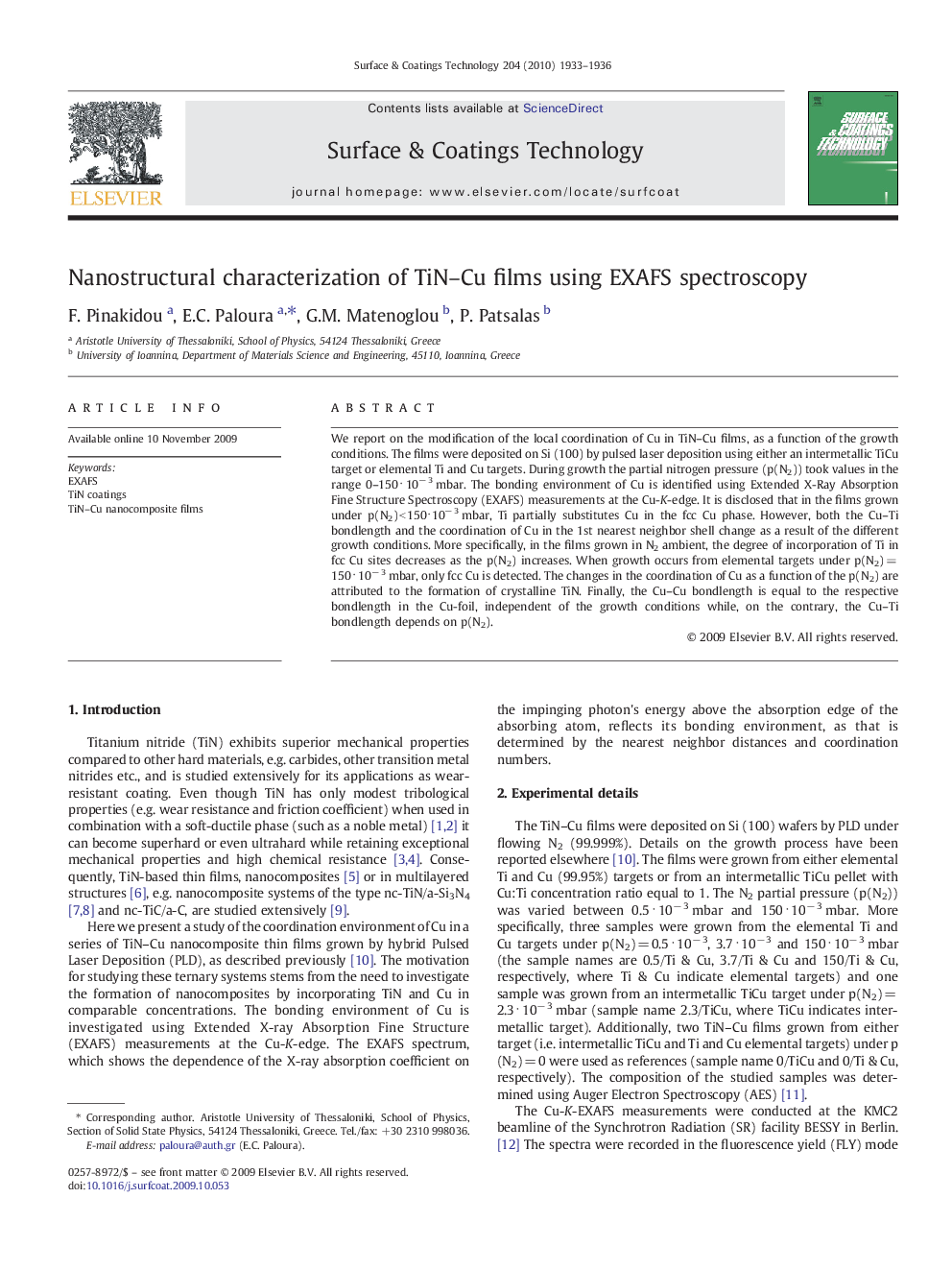| Article ID | Journal | Published Year | Pages | File Type |
|---|---|---|---|---|
| 1659360 | Surface and Coatings Technology | 2010 | 4 Pages |
We report on the modification of the local coordination of Cu in TiN–Cu films, as a function of the growth conditions. The films were deposited on Si (100) by pulsed laser deposition using either an intermetallic TiCu target or elemental Ti and Cu targets. During growth the partial nitrogen pressure (p(N2)) took values in the range 0–150 ⋅ 10− 3 mbar. The bonding environment of Cu is identified using Extended X-Ray Absorption Fine Structure Spectroscopy (EXAFS) measurements at the Cu-K-edge. It is disclosed that in the films grown under p(N2) < 150⋅10− 3 mbar, Ti partially substitutes Cu in the fcc Cu phase. However, both the Cu–Ti bondlength and the coordination of Cu in the 1st nearest neighbor shell change as a result of the different growth conditions. More specifically, in the films grown in N2 ambient, the degree of incorporation of Ti in fcc Cu sites decreases as the p(N2) increases. When growth occurs from elemental targets under p(N2) = 150 ⋅ 10− 3 mbar, only fcc Cu is detected. The changes in the coordination of Cu as a function of the p(N2) are attributed to the formation of crystalline TiN. Finally, the Cu–Cu bondlength is equal to the respective bondlength in the Cu-foil, independent of the growth conditions while, on the contrary, the Cu–Ti bondlength depends on p(N2).
